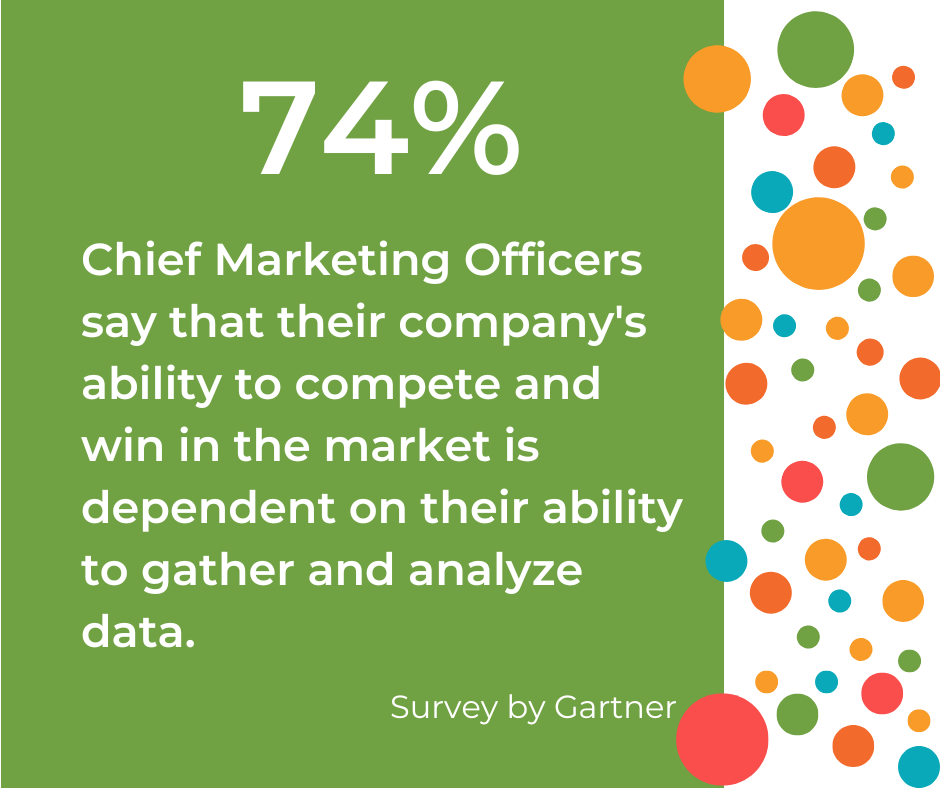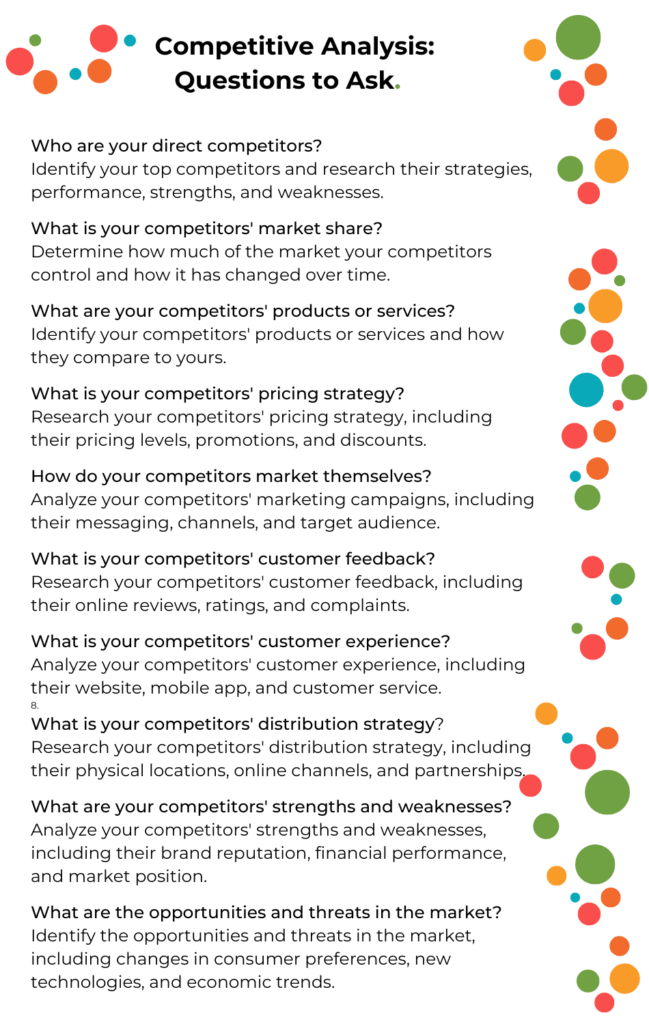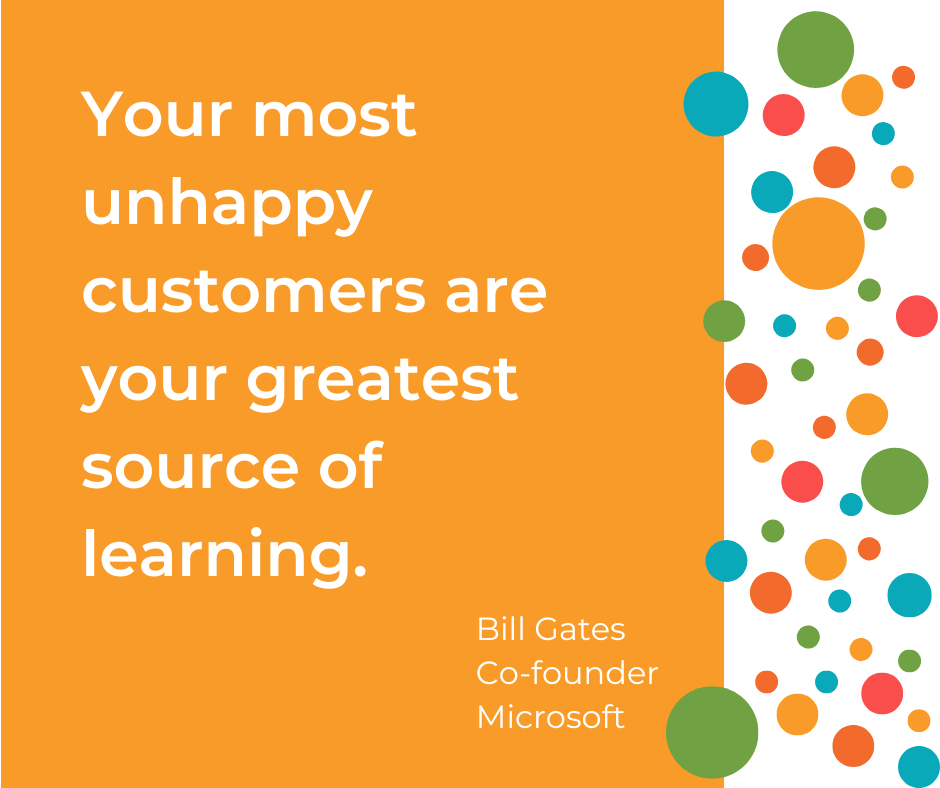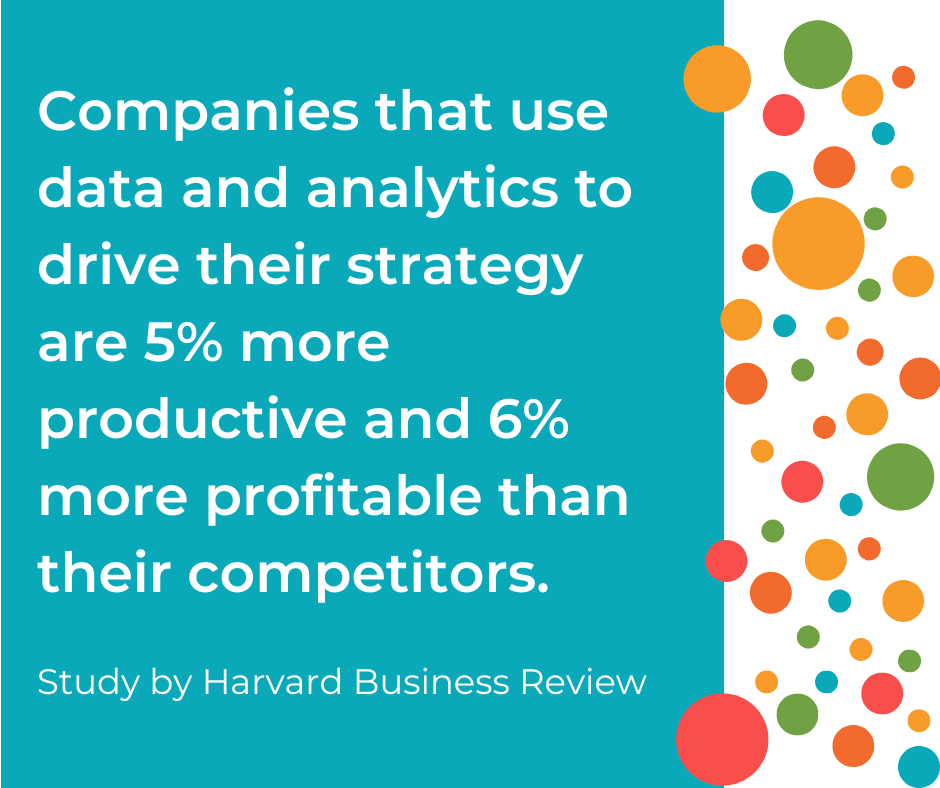Sun Tzu once said, “Know thy self, know thy enemy. A thousand battles, a thousand victories.” While the quote from this ancient Chinese military strategist is about tactical warfare, it also highlights the importance of understanding your place in the market and the competition you face.
In today’s world of global e-commerce, where sales amounted to over $5.7 trillion in 2022, businesses must conduct a competitive analysis to gain an edge. This article will delve into the essential steps of competitive analysis and show you how to leverage the insights gained to enhance your brand or product’s market position. Whether you’re a marketer, brand manager, or product manager, this post will provide the knowledge and tools to evaluate your business’s performance and stay ahead of the competition.
Identifying Competitors
The first step in conducting a competitive analysis is identifying your competitors. This includes direct competitors who offer similar products or services and indirect competitors who offer substitutes or alternatives to your offerings.
A direct competitor is a business that offers similar products or services and targets the same customer segments as another business. Direct competitors are often in direct competition for customers and market share. For example, Nike and Adidas are direct competitors in the athletic footwear and apparel market. Both companies offer similar products, such as running shoes, athletic wear, and accessories, and target the same customer segments, including athletes and fitness enthusiasts.
An indirect competitor is a business that offers products or services that are not the same as another business but still competes for customers in the same market. Indirect competitors can offer substitute products or services or cater to a slightly different customer segment. For example, Uber and public transportation services are indirect competitors. While they offer different products and services, they still compete for customers who need to travel from one place to another. In some cases, customers may choose to take public transportation instead of Uber, or vice versa, depending on convenience, cost, and availability.
One way to identify your competitors is to research your industry and market. Look for companies with similar products or services and a similar target audience. You can also ask your customers who they consider as alternatives to your brand or product.
Another method is to use online tools such as Google Trends, SEMrush, or SimilarWeb. These tools allow you to analyse the search volume and traffic of your competitors’ websites and their social media presence and marketing tactics.
Once you have identified your competitors, you must classify them and understand their strengths and weaknesses. This will help you gain insights into their strategies and how they are positioning themselves in the market. For example, if you’re a fitness app, your direct competitors may include other fitness apps such as Fitbit and MyFitnessPal, while your indirect competitors may include gyms or personal trainers.
Understanding your competitors’ pricing strategies, marketing tactics, and features can help you differentiate your brand and attract more customers. A Harvard Business Review article emphasises the importance of understanding competitors: “It’s not enough to know who your competitors are. You need to know how they think, what drives them, their goals and values, and their strengths and weaknesses.” By conducting a thorough competitive analysis, you can gain valuable insights into your competitors and use them to improve your business strategy.

Analysing Competitors
Once you have identified your competitors, the next step is thoroughly analysing their business strategy. This includes researching their products or services, pricing strategies, marketing tactics, and overall market position.
One way to analyse your competitors is to visit their websites and social media profiles. Look at the design and layout of their website, the features of their products or services, and their pricing strategy. Also, pay attention to their social media presence, including the type of content they share, how often they post, and their engagement with customers.
Another method is to purchase or use your competitors’ products or services. This will give you firsthand experience with their offerings and allow you to identify areas where you can differentiate your brand or product.
Additionally, you can conduct a SWOT analysis of your competitors. SWOT stands for strengths, weaknesses, opportunities, and threats. You can identify areas to improve your business strategy by analysing your competitors’ strengths and weaknesses. Similarly, you can adapt your approach to changing market conditions by identifying opportunities and threats.
For example, let’s say you’re a restaurant owner, and your competitor is a nearby restaurant that offers similar cuisine. By analysing their pricing strategy, menu offerings, and customer reviews, you discover they offer a more extensive menu and are priced slightly higher than your restaurant. You can use this information to differentiate your brand by providing a unique menu with higher-quality ingredients at a competitive price.
Evaluating Your Position
After analysing your competitors, you must compare your position and strengths. This will help you identify areas where you can improve your business strategy and differentiate your brand or product from the competition.
One way to evaluate your position is to conduct a SWOT analysis of your business. This includes identifying your strengths, weaknesses, opportunities, and threats. By analysing your strengths and weaknesses, you can identify areas to improve your business strategy. Similarly, you can adapt your strategy to changing market conditions by identifying opportunities and threats.
Another method is to analyse your customer feedback and reviews. Look for areas where your customers are particularly satisfied and where they think you can improve. This will give you insights into your strengths and weaknesses and help you understand how you’re perceived in the market.
Additionally, you can evaluate your pricing strategy and marketing tactics. Are you offering competitive prices for your products or services? Are your marketing efforts effective in reaching your target audience? By evaluating these aspects of your business, you can identify areas to improve and differentiate your brand.
For example, let’s say you’re a tech company that offers a productivity app. After analysing your competitors, you may find that your app offers similar features to your competitors but at a lower price point. You can use this information to differentiate your brand by emphasising the value of your app and targeting price-sensitive customers.
As business strategist Jay Abraham once said, “Your competitors can teach you everything you need to know about your own customers.” By evaluating your position and strengths compared to your competitors, you can gain valuable insights that will help you improve your business strategy and attract more customers.

Creating an Action Plan
Once you have conducted a competitive analysis and evaluated your position, it’s time to create an action plan leveraging the insights gained. An action plan should be a detailed roadmap of the steps you need to take to improve your brand or product’s market position.
One way to create an action plan is to prioritise the insights gained from your competitive analysis and evaluation. For example, if you’ve identified a weakness in your pricing strategy, you may prioritise adjusting your prices to be more competitive. Similarly, if you’ve identified an opportunity to target a new customer segment, you may prioritise developing a new marketing campaign to appeal to that segment.
Another method is to set specific goals and metrics to track progress. For example, if you’ve identified a weakness in your customer service, you may aim to improve your customer satisfaction ratings by a certain percentage within a specific timeframe.
It’s also important to allocate resources and assign responsibilities to implement the action plan effectively. This includes assigning tasks to specific team members, determining the budget required, and establishing timelines for each step of the plan.
A report by Forbes emphasises the importance of having a concrete action plan, stating, “The key to success in competitive analysis is to turn insights into action.” By creating a detailed action plan, you can ensure that the insights gained from the competitive analysis are used to drive tangible results and improvements to your business.
The Importance of Regular Competitive Analysis
Competitive analysis is not a one-time event but a continuous process that should be conducted regularly. The market constantly changes, and new competitors and trends can emerge at any time. Regular competitive analysis can help businesses stay ahead and adapt their strategy to changing market conditions.
One way to stay on top of the competition is to set up a system for continuously monitoring and analysing your competitors. This includes tracking their pricing strategy, product offerings, marketing campaigns, and customer feedback. By monitoring your competitors, you can identify changes in the market and adjust your strategy accordingly.
Regular competitive analysis also helps businesses identify potential threats and opportunities in the market. For example, if a new competitor enters the market, regular analysis can help you identify its strengths and weaknesses and adjust your strategy to compete effectively.
Additionally, regular competitive analysis can help businesses identify areas to improve their strategy. By analysing your competitors’ strengths, you can identify areas where you may fall short and adjust your strategy accordingly.
A Real-Life Example of Competitive Analysis
Let’s take a look at a real-life example of how competitive analysis can help brands improve their market position:
Airbnb and Hotels
Airbnb and hotels are two accommodation options for travellers. Airbnb, founded in 2008, offers an online platform for people to rent out their homes, apartments, and other spaces to travellers. On the other hand, hotels offer traditional accommodation in a dedicated facility with various amenities and services.
SWOT Analysis of Airbnb
Strengths:
- Unique experiences: Airbnb offers unique and authentic experiences for travellers by allowing them to stay in local homes and neighbourhoods.
- Low prices: Airbnb offers lower prices than traditional hotels, making it an attractive option for budget-conscious travellers.
- Innovative technology: Airbnb uses innovative technology, such as its search algorithm and messaging system, to enhance the customer experience.
Weaknesses:
- Quality control: Airbnb’s reliance on individual hosts can lead to inconsistent quality and standards across its listings.
- Legal and regulatory challenges: Airbnb has faced legal and regulatory challenges in several cities, which can limit its growth opportunities.
- Limited services: Airbnb offers limited services compared to hotels, such as room service and housekeeping.
Opportunities:
- Expansion into new markets: Airbnb can expand its offerings to include new types of accommodations, such as boutique hotels or bed and breakfasts.
- Partnerships with tourism boards: Airbnb can partner with tourism boards to promote local tourism and offer unique experiences.
- Personalisation: Airbnb can use data and technology to personalise its offerings and customer recommendations.
Threats:
- Competition from traditional hotels: Traditional hotels are increasing their focus on offering unique and authentic experiences to compete with Airbnb.
- Safety concerns: Safety concerns like theft and vandalism can impact the customer experience and damage Airbnb’s reputation.
- Economic downturns: Economic downturns can impact travel and tourism, impacting Airbnb’s business.
SWOT Analysis of Hotels:
Strengths:
- Established brand reputation: Hotels have a well-established brand reputation and are a trusted accommodation option for travellers.
- Wide range of services and amenities: Hotels offer a wide range of services and amenities, such as room service and housekeeping, to enhance the customer experience.
- Consistent quality: Hotels offer consistent quality and standards across their properties.
Weaknesses:
- High prices: Hotels can be more expensive than other accommodation options, making them less attractive to budget-conscious travellers.
- Lack of personalisation: Hotels can be less personalised than Airbnb, as they offer a more standardised experience.
- Limited local experiences: Hotels can lack the unique local experiences that Airbnb offers, as they are often located in tourist areas.
Opportunities:
- Focus on unique experiences: Hotels can offer unique and authentic experiences to compete with Airbnb.
- Partnerships with local businesses: Hotels can partner with local companies to offer unique experiences and enhance the customer experience.
- Personalisation: Hotels can use data and technology to personalise their offerings and customer recommendations.
Threats:
- Competition from Airbnb: Airbnb’s unique offerings and lower prices can attract customers away from traditional hotels.
- Economic downturns: Economic downturns can impact travel and tourism, impacting hotels’ business.
- Safety concerns: Safety concerns, such as crime and terrorism, can impact the customer experience and damage hotels’ reputations.
When Airbnb entered the market, it disrupted the traditional hotel industry. Initially, hotels underestimated Airbnb’s impact and did not conduct a competitive analysis to understand the company’s strategy.
However, as Airbnb’s popularity grew, hotels began recognising the threat and adapted their strategy to compete. Hotels started to offer more unique and local experiences to attract customers, a strategy that Airbnb had successfully implemented. Additionally, hotels invested in technology to enhance the guest experience and offer more personalised service.
Some hotels also started to offer short-term rentals and home-sharing services to compete with Airbnb directly.
One example of a hotel that successfully adapted its strategy to compete with Airbnb is Marriott International. In 2019, Marriott launched its Homes & Villas program, offering high-end home rentals in more than 100 destinations worldwide. By providing unique and local experiences, personalised service, and home-like amenities, Marriott was able to attract customers who might otherwise have booked with Airbnb.
Overall, the success of Airbnb has demonstrated the importance of conducting competitive analysis and staying up-to-date on industry trends and developments. By understanding the competition and adapting their strategy accordingly, brands can stay ahead of the curve and drive business success.
Lessons Learned
The case study of Airbnb vs. hotels provides valuable lessons for businesses in any industry. Here are a few key takeaways:
- Disruption can come from unexpected sources: Hotels initially underestimated Airbnb’s impact and did not conduct competitive analysis to understand the company’s strategy. As a result, they were caught off guard when Airbnb disrupted the industry.
- Adaptability is key: Hotels eventually adapted their strategy to compete with Airbnb, offering more unique and local experiences to attract customers. This shows the importance of adaptability and willingness to change your strategy when faced with new competitors or market conditions.
- Customer preferences are changing: Airbnb’s success is partly due to customers’ changing preferences, who are increasingly seeking unique and authentic experiences. This highlights the importance of understanding your customers’ preferences and adapting your strategy to meet their needs.
- Innovation can create new opportunities: Airbnb’s success has created new opportunities for other businesses, such as property management companies specialising in short-term rentals. This shows the potential for innovation to develop new business models and opportunities in any industry.
In conclusion, the case study of Airbnb vs. hotels highlights the importance of conducting competitive analysis, being adaptable, understanding customers’ preferences, and embracing innovation. By applying these lessons to your brand, you can stay ahead of the competition and drive business success.

Examples of Successful Competitive Analysis
Competitive analysis is a powerful tool that can help businesses gain a competitive advantage in their industry. Here are a few examples of companies that have successfully used competitive analysis to improve their strategy and gain a stronger market position:
- Coca-Cola vs. Pepsi: For decades, Coca-Cola and Pepsi have been locked in fierce competition for market share. In the early 2000s, Coca-Cola conducted a comprehensive competitive analysis of Pepsi, analysing everything from its marketing campaigns to its pricing strategy. As a result, Coca-Cola developed a new marketing campaign emphasising the brand’s history and nostalgia, which helped them gain a stronger foothold in the market.
- Netflix vs. Blockbuster: In the early 2000s, Netflix was a relatively unknown startup that offered a subscription-based DVD rental service. At the time, Blockbuster was the dominant player in the video rental market. However, Netflix conducted a thorough competitive analysis of Blockbuster, identifying weaknesses in its strategy and opportunities for growth. Netflix then shifted its focus to streaming video, which ultimately allowed them to overtake Blockbuster and become the dominant player in the market.
- Amazon vs. Barnes & Noble: In the 1990s, Barnes & Noble was the largest bookstore chain in the United States. However, with the rise of e-commerce, Amazon quickly emerged as a formidable competitor. Amazon conducted a thorough competitive analysis of Barnes & Noble, identifying opportunities to improve their online shopping experience and offer a wider selection of products. As a result, Amazon was able to outmanoeuvre Barnes & Noble and become the dominant player in the book industry.
Tools and Resources for Conducting Competitive Analysis
Conducting competitive analysis can be a complex and time-consuming process. Fortunately, many tools and resources are available to help brands conduct competitive analysis effectively. Here are a few examples:
- Competitive analysis templates: Many business and marketing websites offer free or paid templates for conducting competitive analysis. These templates provide a framework for identifying and analysing your competitors’ strengths and weaknesses and opportunities and threats in the market.
- Industry reports: Industry reports provide valuable data and insights into the competitive landscape of a particular industry. These reports may include information on market share, pricing trends, consumer preferences, and more. They can be purchased from market research firms or industry associations.
- Online tools: Many online tools are available to help businesses conduct competitive analysis, such as SEMrush for analysing online advertising and search engine rankings and SimilarWeb for analysing website traffic and engagement.
- Social media analytics: Social media platforms offer valuable data on customer sentiment, engagement, and trends. You can gain insights into your marketing strategy and customer preferences by analysing your competitors’ social media presence.
- Market Research Agencies: Hiring an expert market research agency can be a valuable investment for businesses that lack the expertise or resources to conduct competitive analysis in-house. Agencies can provide a deep understanding of your industry and competitors and insights into emerging trends and opportunities.
Tips for Staying Ahead of the Competition
Conducting competitive analysis is an essential part of developing a successful business strategy. However, it’s not enough to simply analyse your competitors – you also need to use the insights gained to stay ahead of the competition. Here are a few tips for staying ahead:
- Stay up-to-date on industry trends: Keeping up with the latest trends and developments in your industry can help you anticipate changes in the market and stay ahead of the competition. Subscribe to industry newsletters, attend conferences and trade shows, and follow industry leaders on social media to stay informed.
- Focus on customer needs: While it’s essential to understand your competitors’ strategies, it’s even more critical to understand your customers’ needs and preferences. Conducting market research and gathering customer feedback can help you tailor your products and services to meet their needs and gain a competitive edge.
- Invest in innovation: Innovation can help you differentiate your business and stay ahead of the competition. Invest in research and development, experiment with new technologies and business models, and encourage a culture of innovation within your organisation.
- Build strong partnerships: Building strong partnerships with other businesses can help you expand your reach and offer more value to your customers. Look for opportunities to partner with companies that complement your own, such as suppliers, distributors, or complementary service providers.
- Embrace change: Finally, it’s essential to be flexible and adaptable in the face of change. The business landscape is constantly evolving, and it’s important to be willing to pivot your strategy when necessary to stay ahead of the competition.
Challenges and Limitations of Competitive Analysis
While competitive analysis is a valuable tool for businesses to evaluate their position in the market and gain a competitive advantage, it’s essential to approach this process with a critical and realistic perspective. Here are a few challenges and limitations of competitive analysis:
- Difficulty obtaining accurate data: Competitors may not always disclose accurate or complete information about their strategy or performance. This can make it challenging to get accurate data and insights about their strengths and weaknesses.
- Risk of focusing too much on competitors: Focusing too much on competitors can sometimes lead businesses to overlook the needs and preferences of their customers. It’s essential to strike a balance between understanding your competitors’ strategies and staying focused on your value proposition.
- Limitations of industry reports: While they can provide valuable data and insights into the competitive landscape, industry reports may not always be up-to-date or relevant to your business. It’s vital to supplement industry reports with independent research and analysis.
- Rapidly changing market conditions: The business landscape constantly evolves, and competitors may adopt new strategies or technologies that disrupt the market. It’s important to stay agile and adaptable in the face of change and to update your competitive analysis to reflect new developments regularly.
- Risk of overreliance on competitive analysis: Competitive analysis is just one tool in a business’s arsenal. It’s crucial to supplement competitive analysis with other types of research, such as customer feedback and market research, to gain a complete picture of the market and stay ahead of the competition.

Future Trends in Competitive Analysis
As the business landscape evolves, new trends and technologies change how businesses conduct competitive analysis. Here are a few emerging trends to watch:
- Artificial intelligence: Artificial intelligence (AI) is revolutionising many aspects of business, including competitive analysis. AI-powered tools can analyse vast amounts of data and identify patterns and trends that human analysts might miss. They can also provide real-time insights into competitors’ pricing strategies, marketing campaigns, and more.
- Social media analytics: Social media platforms offer a wealth of data on customer sentiment, engagement, and trends. By analysing this data, businesses can gain insights into their competitors’ marketing strategies and customer preferences. Social media analytics tools are becoming increasingly sophisticated, making it easier for companies to conduct competitive analyses on these platforms.
- Predictive analytics: Predictive analytics uses data, statistical algorithms, and machine learning to identify future outcomes based on historical data. This technology is becoming increasingly important in competitive analysis, allowing businesses to anticipate changes in the market and stay ahead of the competition.
- Big data analytics: The amount of data available to businesses is growing exponentially, and big data analytics is becoming increasingly important in competitive analysis. Big data analytics tools can help companies to identify patterns and trends in large data sets, providing valuable insights into competitors’ strategies and market trends.
- Collaboration and knowledge sharing: Finally, business collaboration and knowledge sharing are becoming increasingly important in competitive analysis. By sharing information and insights with other businesses in their industry, companies can gain a more complete picture of the market and identify opportunities for growth and innovation.
The Role of Market Research in Competitive Analysis
Market research plays a critical role in competitive analysis. By gathering data on customer needs and preferences, market trends, and competitor strategies, businesses can gain valuable insights into the competitive landscape and develop a strategy that sets them apart. Here are a few reasons why outsourcing market research to an external agency can be a good idea:
- Access to expertise and resources: Market research agencies specialise in gathering and analysing data and have access to sophisticated tools and resources for conducting research. By outsourcing market research to an external agency, businesses can tap into this expertise and gain a complete picture of the market.
- Objectivity and impartiality: Market research agencies are independent from the businesses they serve, which allows them to provide unbiased and objective insights into the market. This can be especially valuable in competitive analysis, where an objective perspective is critical for identifying strengths and weaknesses in the market.
- Cost-effectiveness: Conducting market research in-house can be expensive, especially for small businesses. Outsourcing market research to an external agency can be cost-effective, as agencies can provide access to tools and expertise that might otherwise be prohibitively expensive.
- Time-saving: Market research can be time-consuming, especially for businesses with limited resources. Outsourcing market research to an external agency frees up time and resources to focus on other aspects of their strategy.
- Flexibility: Market research agencies can offer various research services, from online surveys to focus groups to ethnographic research. This allows businesses to choose the best research methods for their needs and budget.
Outsourcing market research to an external agency can be a good idea for brands looking to conduct competitive analysis. By tapping into market research agencies’ expertise, resources, and objectivity, businesses can gain valuable insights into the market and develop a strategy that sets them apart from the competition.
Key Takeaways
Competitive analysis is a valuable tool for brands seeking a competitive advantage in their industry. By identifying their competitors’ strengths and weaknesses, opportunities, and threats in the market, businesses can develop a strategy that sets them apart from the competition. However, it’s essential to approach competitive analysis with a critical and realistic perspective and use the insights gained to inform your strategy and decision-making effectively.
- Competitive analysis is valuable for gaining a competitive advantage in your industry.
- It’s essential to balance understanding your competitors’ strategies and staying focused on your value proposition.
- Market research is critical in competitive analysis, and outsourcing to an external agency can be a cost-effective and efficient solution.
- Businesses should stay up-to-date on emerging trends and technologies in competitive analysis, such as artificial intelligence and social media analytics.
- Finally, businesses should be flexible and adaptable in the face of change and regularly update their competitive analysis to reflect new developments in the market.
Get regular insights
Keep up to date with the latest insights from our research as well as all our company news in our free monthly newsletter.




 Senior Marketing Executive
Senior Marketing Executive Sales & Marketing
Sales & Marketing General Manager PR -Internal Communications & Government Affairs
General Manager PR -Internal Communications & Government Affairs Vital Strategies
Vital Strategies
 Customer Intelligence Director
Customer Intelligence Director